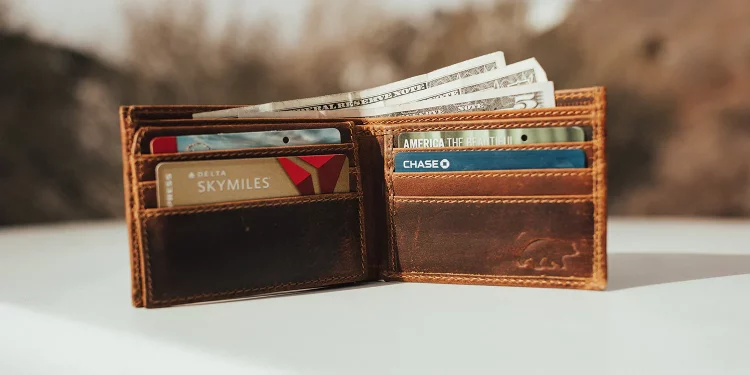With the rise of cryptocurrencies such as Bitcoin, Ethereum, and stablecoins, digital assets are rapidly transforming global finance. However, as adoption grows, so do concerns around transaction security and the safety of crypto wallets. Unlike traditional banking systems, cryptocurrency transactions are irreversible, and users are solely responsible for their funds. This makes robust security practices critical.
In this article, we explore the mechanisms that secure crypto transactions, the types of wallets available, and the best practices users and institutions must follow to prevent wallet theft and loss of funds.
1. How Are Cryptocurrency Transactions Secured?
Cryptocurrency transactions are protected through a combination of blockchain technology, cryptographic algorithms, and consensus mechanisms that make them highly resistant to fraud and tampering.
A. Public-Key Cryptography
Every crypto wallet uses a public/private key pair:
- Public key: Like an email address, this is shared with others to receive funds.
- Private key: Like a password, this must be kept secret. It authorizes outgoing transactions.
Only someone with the correct private key can initiate a transaction. This asymmetric encryption ensures that even if a transaction is visible on the blockchain, no one can alter it or spend the funds without the private key.
B. Digital Signatures
Each transaction is signed with the sender’s private key, creating a unique digital signature. This signature:
- Proves authenticity (the sender is the rightful owner)
- Prevents tampering (any change to the data invalidates the signature)
Nodes on the network verify the signature before accepting the transaction into the blockchain.
C. Blockchain Immutability
Once a transaction is confirmed and added to a block, it becomes immutable—meaning it cannot be altered or reversed. This prevents double-spending and fraud.
D. Consensus Algorithms
Proof of Work (PoW), Proof of Stake (PoS), and other consensus mechanisms ensure that only valid transactions are added to the blockchain. Malicious transactions are rejected by the majority of nodes.
2. Types of Crypto Wallets and Their Security Levels
Crypto wallets are the tools users use to store and manage their private keys. They come in different forms, each with trade-offs between convenience and security.
A. Hot Wallets (Online Wallets)
- Examples: Mobile apps, browser extensions (e.g., MetaMask), exchange wallets.
- Pros: Easy access, quick transactions.
- Cons: Constant internet connection makes them vulnerable to hacking, phishing, and malware.
B. Cold Wallets (Offline Wallets)
- Examples: Hardware wallets (e.g., Ledger, Trezor), paper wallets.
- Pros: Private keys are stored offline, significantly reducing hacking risks.
- Cons: Less convenient, can be lost or damaged if not backed up properly.
C. Custodial Wallets
- Managed by a third party such as a crypto exchange.
- Pros: Recovery options, professional-grade security.
- Cons: User does not control the private keys; funds may be lost if the provider is hacked or mismanages assets.
D. Non-Custodial Wallets
- The user holds their own keys and has full control over funds.
- Pros: True ownership and independence.
- Cons: If you lose the private key or seed phrase, the funds are irrecoverable.
3. Common Threats to Cryptocurrency Wallets
A. Phishing Attacks
- Fake websites or apps trick users into entering their private keys or seed phrases.
- Targeted emails, messages, or even fake browser plugins can also be used.
B. Malware and Keyloggers
- Malicious software installed on a device may capture keystrokes or take screenshots of wallet credentials.
C. SIM Swapping
- Attackers take control of a victim’s mobile number via social engineering and intercept two-factor authentication (2FA) codes.
D. Fake Wallet Apps or Extensions
- Fraudulent wallet applications can steal private keys as soon as they are entered.
E. Social Engineering
- Manipulating users into voluntarily revealing their credentials (e.g., impersonating support staff).

4. Best Practices to Prevent Wallet Theft
A. Use Hardware Wallets for Long-Term Storage
- For large or long-term holdings, hardware wallets are the gold standard.
- Always buy hardware wallets directly from the manufacturer to avoid tampered devices.
B. Secure Your Seed Phrase and Private Keys Offline
- Write down your seed phrase and store it in multiple secure physical locations.
- Never store it digitally (e.g., cloud storage, emails, notes apps).
- Consider using fireproof, waterproof storage or metal seed phrase devices.
C. Enable Multi-Factor Authentication (MFA)
- Always enable 2FA on wallet apps and exchange accounts using authenticator apps (not SMS).
- Consider hardware 2FA devices like YubiKey for added protection.
D. Double-Check URLs and Sources
- Only download wallet software or browser extensions from official sources.
- Bookmark official websites to avoid phishing redirects.
E. Regularly Update Software
- Ensure your wallet apps, operating systems, and browser extensions are updated to fix known vulnerabilities.
F. Use Dedicated Devices
- For high-value transactions, consider using a dedicated offline device that is never connected to the internet except when necessary.
G. Beware of Public Wi-Fi and Unknown Devices
- Never log into your wallet or make transactions over public Wi-Fi or on unfamiliar computers.
5. Exchange Security: What to Look For
If you use exchanges or custodial wallets, choose platforms that prioritize security:
- Cold storage of funds (90%+ of customer assets stored offline)
- Insurance coverage for digital assets
- Bug bounty programs to detect vulnerabilities
- Transparent audits and regulatory compliance
Remember: Not your keys, not your coins. Keeping your assets on an exchange may be convenient, but it carries inherent risks.
6. Future Trends in Crypto Wallet Security
A. Multi-Party Computation (MPC)
- Splits a private key into several parts across different servers or devices, requiring collaboration to sign a transaction.
B. Biometric Authentication
- Facial or fingerprint authentication for transaction approval (already in use on mobile wallets).
C. Social Recovery and Decentralized Identity (DID)
- Allows trusted contacts or identity systems to help recover access if you lose your keys—without a central authority.
D. Secure Enclaves and Trusted Hardware
- New smartphone chips are designed to store private keys in isolated environments unreachable by the operating system or apps.
Conclusion
The security of cryptocurrency transactions lies in the strength of the blockchain protocol and the practices of the user. While blockchain itself is highly secure and resistant to fraud, wallet security remains the weakest link. By understanding how crypto transactions work, using appropriate wallet types, and following strict security protocols, users can greatly reduce the risk of theft or loss.
In the decentralized world of crypto, you are your own bank—and that means taking full responsibility for safeguarding your assets.


















































